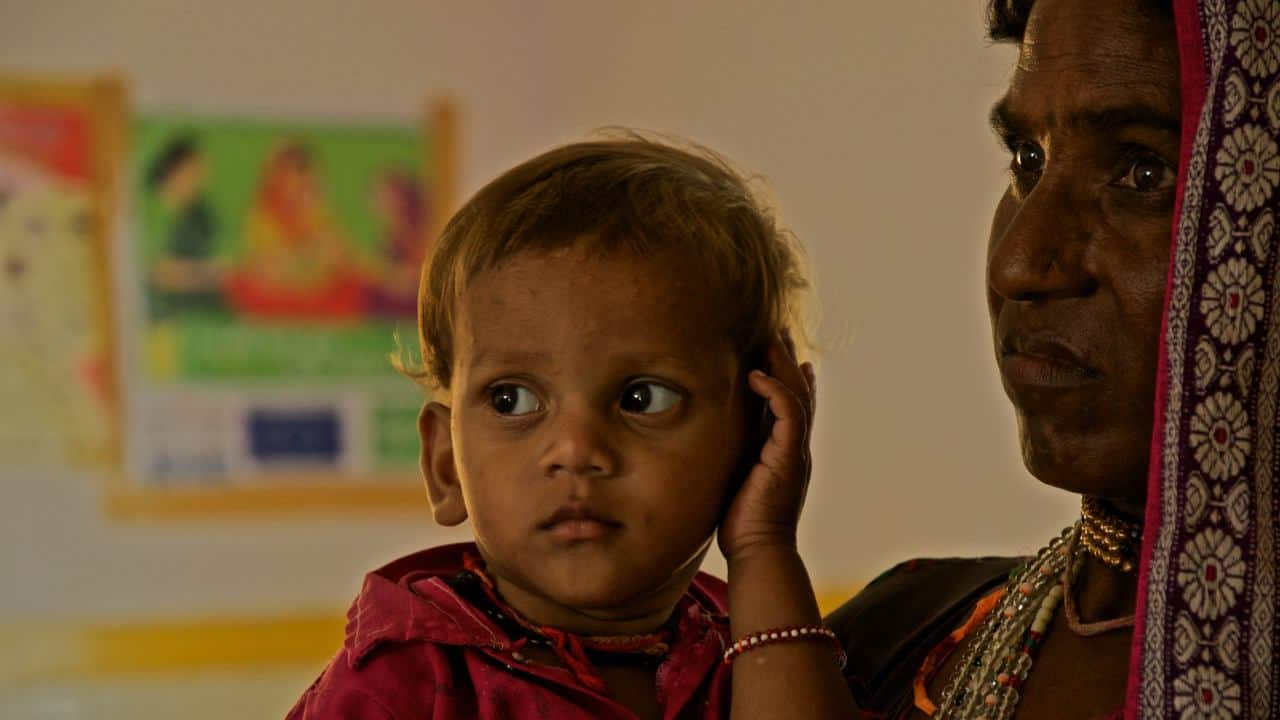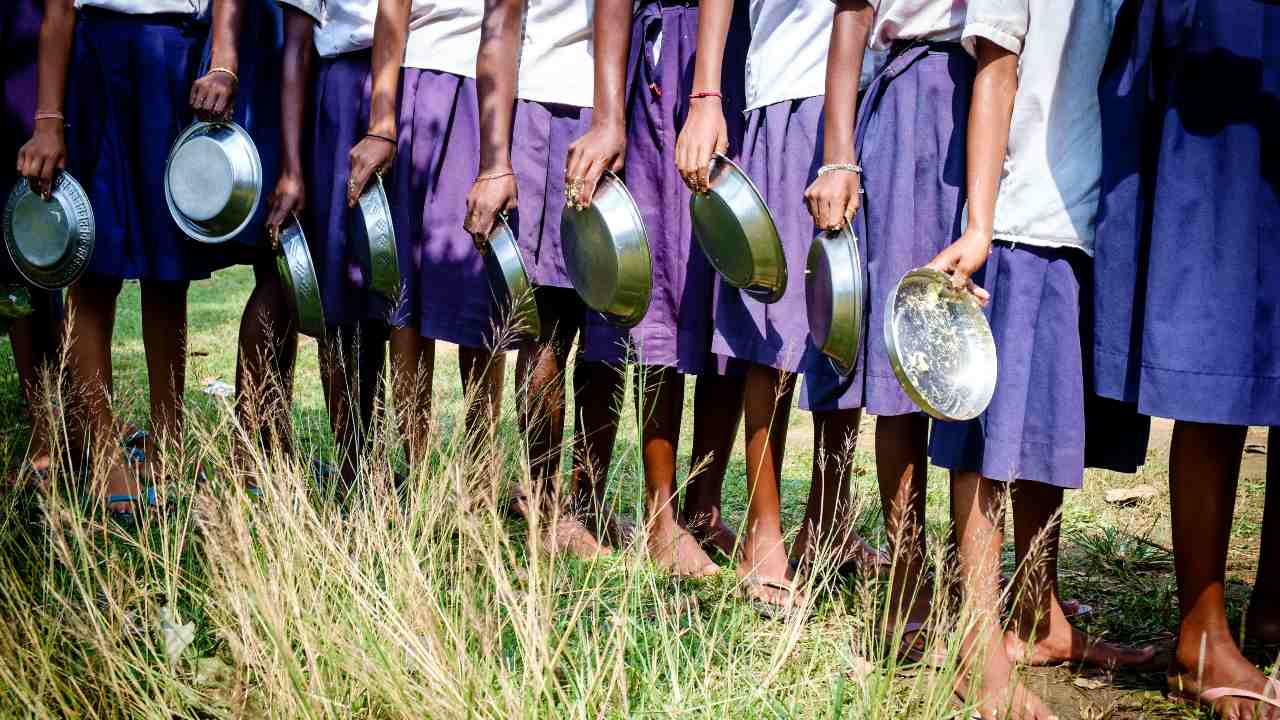Half the world’s childhood wasting burden is in India. Wasting, wherein a person has an unusually low body weight for their corresponding height, is a strong predictor of mortality in young children. It is usually the result of an acute food shortage and/or disease. World over, there are 24 developing countries with wasting rates of 10 percent or higher, indicating a serious problem that demands an urgent response. Nationally, research shows that wasting hasn’t decreased over the last decade, despite a reduction in other indicators of malnutrition. Severe wasting among children under five is still a big concern. It is also critical that cases of severe wasting be identified and diagnosed. Dubbed ‘Severe Acute Malnutrition (SAM)’ while the condition is still in its early stages, children with SAM that are wasting have nine times the risk of mortality than well-nourished children do. On top of a higher risk of illness and death, children with SAM often suffer low immunity and at the risk of developmental delays. [caption id=“attachment_7673381” align=“alignnone” width=“1280”] There is severe wasting among children under five is a big concern. Image credit: Flickr/TKnox[/caption] Presently, SAM is treating mainly at the facility level — in hospitals and treatment centers for malnutrition. Leaning heavily on public health provisions is necessary to curb widespread diseases and disorders, which makes the facility-based approach a need to help treat children with medical complications from malnutrition. But it also comes with its own set of challenges. Caregivers, particularly mothers, are often not able to leave their work and children at home to attend to their sick child at an inpatient facility for days on end. These facilities are also very capital-intensive and an underutilized capacity does not bode well for a business. It is, however, possible to treat some of the simpler SAM cases at the community level through Community-based Management of Acute Malnutrition (CMAM). These are a set of easily-learned practices to identify and treat early symptoms of CMAM, and isn’t a widespread practice in India. A feasible model of CMAM-based care to supplement the work of facilities can be an excellent weapon in the battle against acute malnutrition. [caption id=“attachment_7673421” align=“alignnone” width=“1280”]
 Mothers are often not able to leave their work and children at home to attend to their sick child at an inpatient facility for days on end. Image credit: EU Civil Protection and Humanitarian Aid.[/caption] Having helped implement the program in select geographies in Jharkhand, I can attest to power of the CMAM model in saving lives. One such story is that of Leela and Ramesh, who live in the Gendimundi village of Khuntpani Block, Jharkhand with their four children. Munni is the youngest of the lot, at 22 months old. The mother is the family breadwinner, employed as a daily-wage brickwork labourer, and the father is unemployed. Lack of care at home resulted in Munni losing a drastic amount of weight. The family was a beneficiary of the Antodaya Anna Yojana scheme, which qualified them for 35 kg of rice every month. But rice alone does not contain all the required nutrients a growing child needs. It was during a house-to-house screening by the Anganwadi Workers (AWWs) that Munni was diagnosed with SAM. This was later confirmed by a midwife during a visit to the Village Health, Sanitation and Nutrition Day (VHSND) campaign for a final assessment. Once Munni’s nutrition status was confirmed as SAM, it was found that she hadn’t sustained any medical complications from it, and enrolled in the CMAM program. As part of the program, Munni began to receive adequate nutritional supplements and medical attention, and counseling was provided to her mother on her condition and the actions to be taken if it deteriorated. Leela was subsequently paid a visit by an Anganwadi worker to counsel the family on hand washing and personal hygiene, and to check if Munni was eating properly again. Meanwhile, Munni’s health began to improve and within eight weeks, she recovered completely. [caption id=“attachment_7673461” align=“alignnone” width=“1280”]
Mothers are often not able to leave their work and children at home to attend to their sick child at an inpatient facility for days on end. Image credit: EU Civil Protection and Humanitarian Aid.[/caption] Having helped implement the program in select geographies in Jharkhand, I can attest to power of the CMAM model in saving lives. One such story is that of Leela and Ramesh, who live in the Gendimundi village of Khuntpani Block, Jharkhand with their four children. Munni is the youngest of the lot, at 22 months old. The mother is the family breadwinner, employed as a daily-wage brickwork labourer, and the father is unemployed. Lack of care at home resulted in Munni losing a drastic amount of weight. The family was a beneficiary of the Antodaya Anna Yojana scheme, which qualified them for 35 kg of rice every month. But rice alone does not contain all the required nutrients a growing child needs. It was during a house-to-house screening by the Anganwadi Workers (AWWs) that Munni was diagnosed with SAM. This was later confirmed by a midwife during a visit to the Village Health, Sanitation and Nutrition Day (VHSND) campaign for a final assessment. Once Munni’s nutrition status was confirmed as SAM, it was found that she hadn’t sustained any medical complications from it, and enrolled in the CMAM program. As part of the program, Munni began to receive adequate nutritional supplements and medical attention, and counseling was provided to her mother on her condition and the actions to be taken if it deteriorated. Leela was subsequently paid a visit by an Anganwadi worker to counsel the family on hand washing and personal hygiene, and to check if Munni was eating properly again. Meanwhile, Munni’s health began to improve and within eight weeks, she recovered completely. [caption id=“attachment_7673461” align=“alignnone” width=“1280”] School children stand in a line to get their mid-day meal that is provided to them in school. Image credit: Getty[/caption] Initiatives like VHSND and CMAM let by the Government of Jharkhand, along with the concerted efforts by the Anganwadi Workers (AWW), Auxiliary Nurse Midwives (ANM) in a community-based approach helped Munni fight the battle against SAM. To continue her recovery, Leela also fed Munni the food provided by the AWC as a take-home ration under a supplementary nutrition program. Munni’s story brings to light the challenges that can result in children becoming malnourished. Leela was unable to seek inpatient treatment for Munni with a job to hold. This is where home-based approaches allowed her to be treated with minimal disruption to her family life and capability to earning an income. The POSHAN Abhiyaan program was launched by the Indian government in 2018, signaling a strong commitment to improve and accelerate attaining the desired nutritional status of children. Comprehensive approaches, both preventive and curative, to tackle malnutrition (CMAM among them), need to be adopted in a concerted way. They will also need to be rapidly scaled up, which in turn could help build synergy on the actions against SAM and provide sustainable solutions that focus on prevention and treatment of acute malnutrition. The CMAM programme has the potential to reach every child with SAM rapidly due to the extensive network of health facilities and community-based platforms that exist in the country. If this intervention must achieve impact, then implementation bottlenecks need to be systematically addressed so that such high-impact nutrition interventions are delivered with increased coverage and improved quality. Munni was only one of the thousands of lives this program could save going forward. The author is a senior doctor and Director-General of the State Nutrition Mission of Jharkhand.
School children stand in a line to get their mid-day meal that is provided to them in school. Image credit: Getty[/caption] Initiatives like VHSND and CMAM let by the Government of Jharkhand, along with the concerted efforts by the Anganwadi Workers (AWW), Auxiliary Nurse Midwives (ANM) in a community-based approach helped Munni fight the battle against SAM. To continue her recovery, Leela also fed Munni the food provided by the AWC as a take-home ration under a supplementary nutrition program. Munni’s story brings to light the challenges that can result in children becoming malnourished. Leela was unable to seek inpatient treatment for Munni with a job to hold. This is where home-based approaches allowed her to be treated with minimal disruption to her family life and capability to earning an income. The POSHAN Abhiyaan program was launched by the Indian government in 2018, signaling a strong commitment to improve and accelerate attaining the desired nutritional status of children. Comprehensive approaches, both preventive and curative, to tackle malnutrition (CMAM among them), need to be adopted in a concerted way. They will also need to be rapidly scaled up, which in turn could help build synergy on the actions against SAM and provide sustainable solutions that focus on prevention and treatment of acute malnutrition. The CMAM programme has the potential to reach every child with SAM rapidly due to the extensive network of health facilities and community-based platforms that exist in the country. If this intervention must achieve impact, then implementation bottlenecks need to be systematically addressed so that such high-impact nutrition interventions are delivered with increased coverage and improved quality. Munni was only one of the thousands of lives this program could save going forward. The author is a senior doctor and Director-General of the State Nutrition Mission of Jharkhand.
A feasible model of community-led CMAM practises for kids can be an excellent weapon in the fight against acute malnutrition.
Advertisement
End of Article


)

)
)
)
)
)
)
)
)



